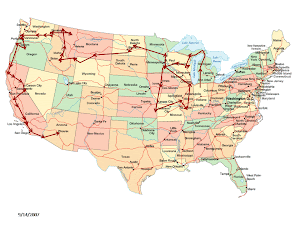 Redwoods are majestic and beautiful.
Redwoods are majestic and beautiful. To the left is the type of needles on the top of the tree. To the right is the broader needles found on most of the tree. It is not unusual for redwoods to have their first limb at 100 to 150 feet above the ground.
To the left is the type of needles on the top of the tree. To the right is the broader needles found on most of the tree. It is not unusual for redwoods to have their first limb at 100 to 150 feet above the ground. Fallen redwoods are important in that many more plants and critters live on a fallen tree than a live one.
Fallen redwoods are important in that many more plants and critters live on a fallen tree than a live one. Drive thru service in this redwood.
Drive thru service in this redwood. There is a belt of redwoods that is approximatly 40 miles wide and stretches from lower Oregon to southern California.
There is a belt of redwoods that is approximatly 40 miles wide and stretches from lower Oregon to southern California.Today we drove down the Avenue of the Giants. It is a 32 mile drive through the Redwood trees in northern California. Redwoods have bark that is thick – up to a foot thick and it is wet so forest fires don’t normally harm them – in fact the fires generally help the redwoods by getting rid of their competition for water and nutrients. Today we saw scars on the trees from fires and we saw a few redwoods that have been hollowed out in the trunk area by fires, but are still living. Redwoods can weigh up to 500 tons, and have reached 370 feet tall. The thick bark also helps shield them from insects. It takes a thousand tons (2 million gallons) of water to make a ton of tree. The average tree in the forest we were in is 400 to 600 years old.
The forest is damp and cool. The trees can live in three climates at once. The roots in the damp soil, the trunks in cool dry climate and the tree tops in sunny, desert like conditions. The needles are versatile in that if it is dry they can gather moisture from the fog and rain and yet a large tree can put up to 500 gallons of water into the air in a day. The needles on most of the trees branches are broad and flat so they can catch more available sunlight. However, needles near the top have tight, scale-like spikes which reduces evaporative surfaces for the dryer conditions found there. Redwood roots grow only a few feet down into the soil, but they can grow laterally 100 feet or more. They also can intertwine and graft onto one another, thus helping to hold each other up.


No comments:
Post a Comment